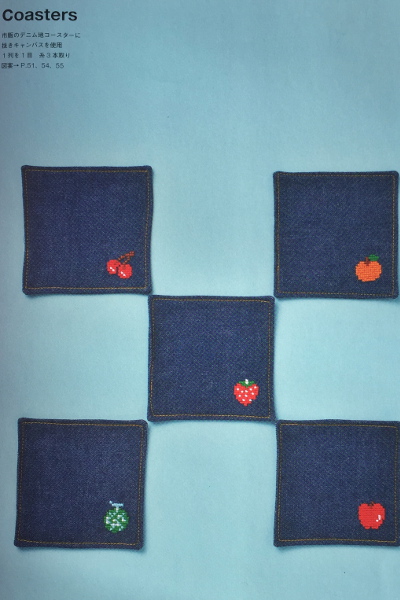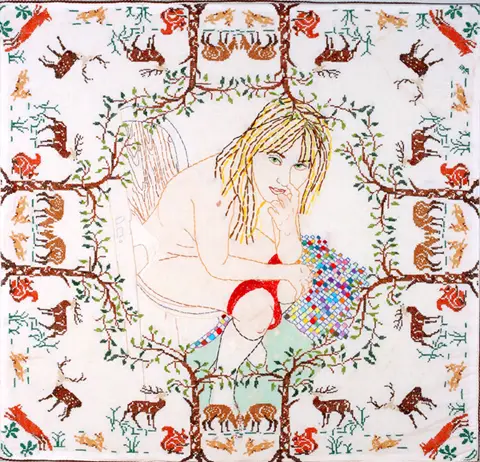Last month I showed you a bit of Oozu Makoto’s adorable and retro book, ‘Game & Stitch!’.
We talked about some vintage games that you may or may not remember since many arcade games never gained a strong following in places other than Japan.
All the same, the style of retro games is unmistakable. On top of the patterns, Makoto-san includes some project ideas and inspiring uses of waste canvas.
Waste canvas is a stiff, removable grid that you stitch your pattern on. When you’re finished, just unravel the ends then use tweezers to gently pull the waste canvas threads out from under your stitches, leaving only an embroidered image.
You can buy waste canvas at craft stores or on Amazon.com, which is where I got mine. Your waste canvas will come with simple instructions.
The internet is also full of blogs and articles about how to waste canvas, but be discerning because not everyone uses waste canvas the same way. For example, I’ve read some tutorials saying you stitch through the small holes and some that say you stitch through the large holes. The fabric you’re using will help determine if you need interfacing. Use a hoop, or don’t. You can baste the waste canvas on to your project, just do what works best for you.
If you have the book, ‘Game & Stitch!’ there are photo instructions in the back about how to stitch on waste canvas. I decided to go with a large-hole-with-interfacing-no-hoop-pin-not-baste approach.
The waste canvas that I used felt very stiff so I decided to soak my project in lukewarm water before I tried removing the threads. If you have a stubborn thread, just move to another one and come back to the tough guy later.
Working on waste canvas is liberating because your canvas becomes anything that a needle pokes through.
Luna is being a good girl modeling a Pac-Man kerchief in her truck.












